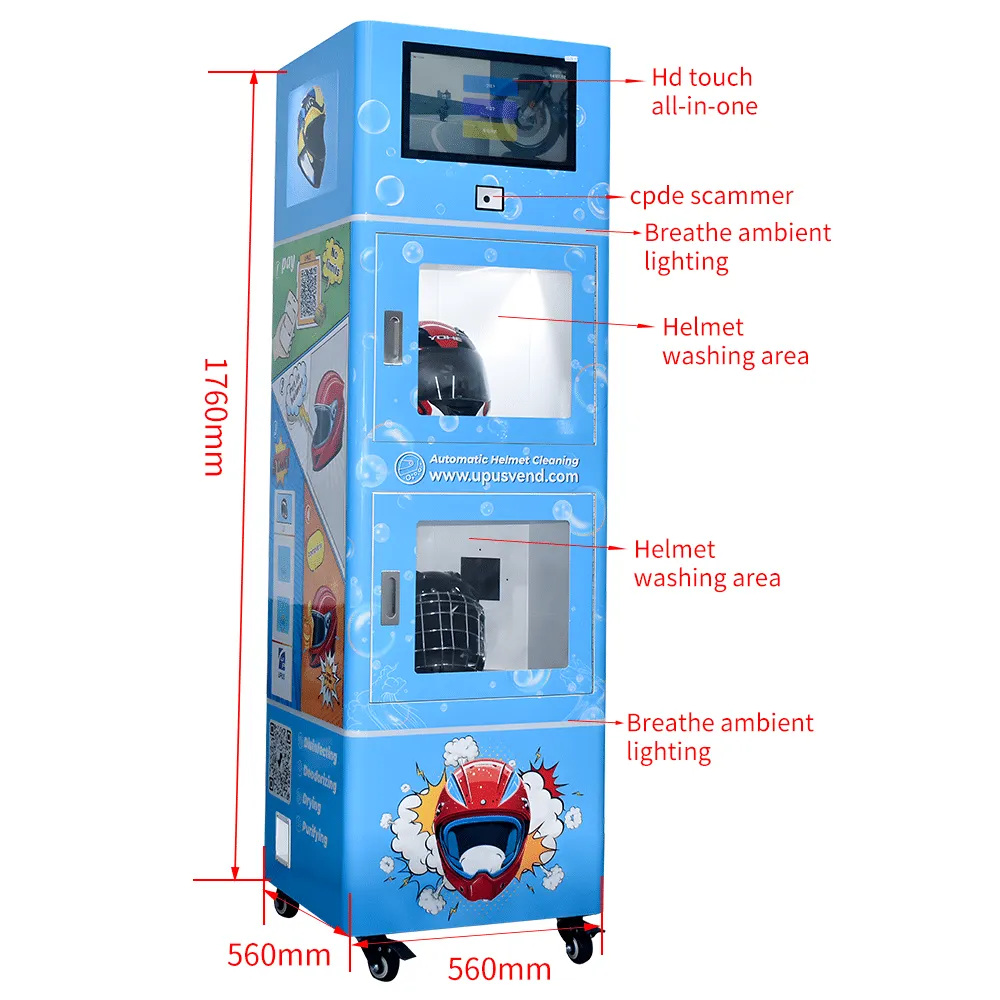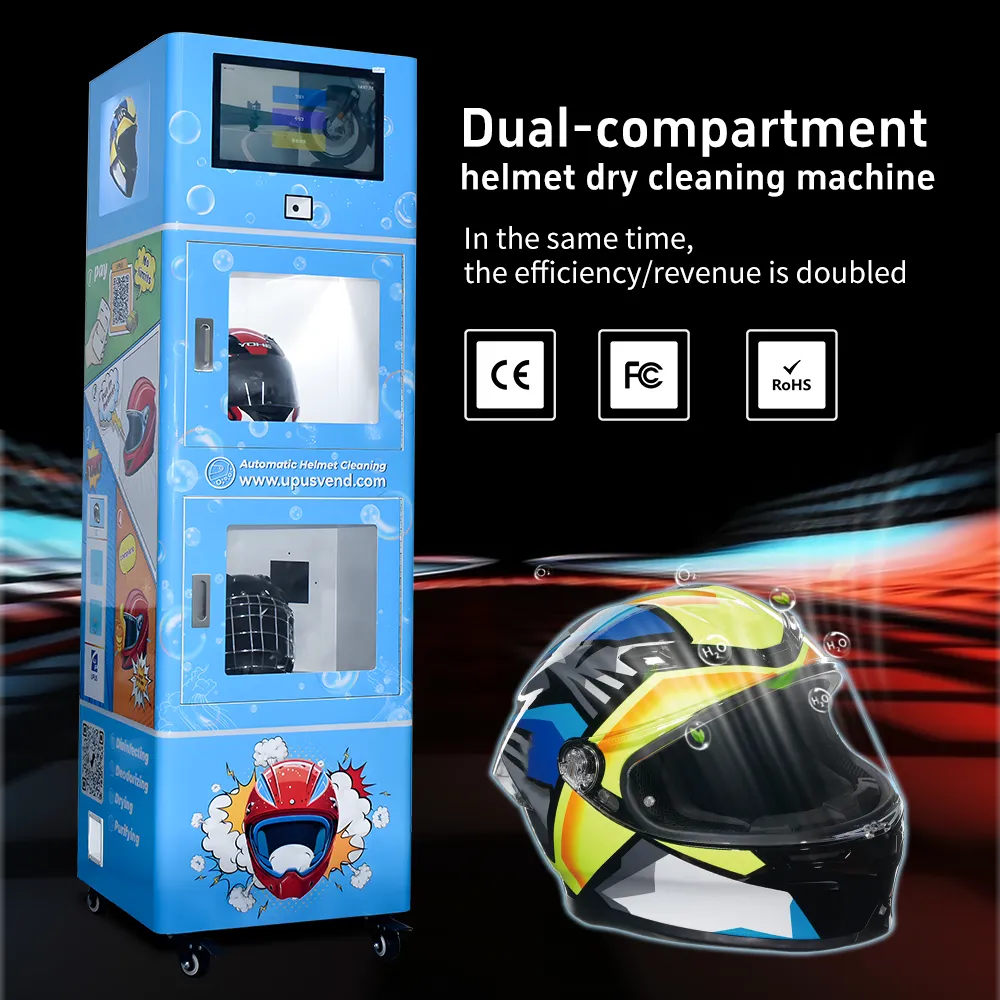Elevating Service Standards with Helmet Cleaning Technology
In industries where helmets are a daily requirement—such as motorbike rentals, construction, mining, and even healthcare—cleanliness and hygiene directly impact the perception of a company’s professionalism. A commercial helmet cleaning machine has emerged as an essential tool for maintaining hygiene, improving customer satisfaction, and enhancing brand image. Its role extends far beyond cleanliness—it represents a brand’s commitment to health, safety, and customer-first service.
The Role of Hygiene in Customer Experience
Enhancing First Impressions
When customers first encounter a sanitized helmet that smells fresh and feels clean, it immediately sets a positive tone for their experience. The presence of a helmet cleaning machine allows businesses to consistently provide this level of cleanliness. This reliability fosters trust and helps companies establish a solid, professional reputation in competitive markets.
Promoting Health and Safety
Helmets can harbor bacteria, sweat, and dust, especially in hot or humid environments. A helmet cleaning machine ensures thorough sanitization using advanced disinfection methods, such as ozone, UV-C light, or steam. This proactive approach reduces health risks, increases user confidence, and meets regulatory hygiene standards where applicable.
Building a Stronger Brand with Clean Helmets
Conveying Attention to Detail
Customers notice the small things. Providing visibly clean and well-maintained helmets shows that a company pays attention to details, which often reflects broader operational excellence. A helmet cleaning machine supports consistent quality, which in turn strengthens brand image and customer loyalty.
Aligning with Sustainability Goals
Many modern helmet cleaning machines use eco-friendly processes that reduce water consumption and eliminate the need for disposable liners or chemical sprays. This sustainability factor is increasingly important to environmentally-conscious consumers and can serve as a competitive advantage.
Operational Advantages for Businesses
Reducing Labor Costs and Downtime
Manual cleaning of helmets is time-consuming and inconsistent. A helmet cleaning machine automates this process, ensuring each helmet is cleaned quickly and thoroughly with minimal labor input. This frees staff to focus on more critical customer service or operational tasks.
Enhancing Workflow Efficiency
Integrating helmet cleaning machines into daily workflows can streamline the turnaround time for helmet reuse. With programmable cleaning cycles and fast processing times, businesses can keep their operations running smoothly, even during peak hours or seasons.
Supporting Diverse Industry Applications
Motorcycle and Scooter Rentals
Rental companies benefit significantly from using a helmet cleaning machine to maintain a hygienic experience for each customer. Clean helmets can reduce customer complaints and increase return business, as renters feel safer and more comfortable.
Industrial and Construction Sites
On worksites, where helmet sharing is common, maintaining cleanliness is not just about comfort—it’s about compliance and safety. A helmet cleaning machine enables organizations to meet health standards without overburdening their workforce.
Increasing Customer Retention and Loyalty
Creating a Memorable Experience
Beyond functional use, a helmet cleaning machine contributes to the overall customer experience. When users see that their safety and hygiene are prioritized, they are more likely to return, recommend the service, or leave positive reviews. These moments create emotional connections with the brand.
Differentiating from Competitors
In saturated markets, every edge counts. Offering services backed by a helmet cleaning machine positions a company as innovative, customer-centric, and forward-thinking. It signals that the business goes the extra mile, a quality customers are more likely to remember and value.

Investing in a Smart, Long-Term Solution
Cost-Effective Over Time
While a helmet cleaning machine may seem like a significant upfront investment, its long-term benefits outweigh the initial cost. The reduction in cleaning time, improved hygiene, and customer retention all contribute to a high return on investment.
Easy Maintenance and Integration
Modern helmet cleaning machines are designed for ease of use and require minimal maintenance. Many models come with user-friendly interfaces, self-cleaning cycles, and integration capabilities for digital management systems. This makes them a convenient addition to any business infrastructure.
Frequently Asked Questions
How does a helmet cleaning machine ensure thorough disinfection?
A helmet cleaning machine uses a combination of steam, UV-C light, or ozone to kill bacteria, viruses, and fungi. These methods penetrate interior padding and hard-to-reach areas to provide comprehensive sanitation.
Is it safe to use a helmet cleaning machine on all helmet types?
Yes, most commercial helmet cleaning machines are designed to accommodate various helmet sizes and materials. However, it is always advisable to check manufacturer guidelines before cleaning specialty helmets.
How long does the helmet cleaning process take?
Depending on the model and method used, a helmet cleaning cycle can take anywhere from 2 to 10 minutes. Faster models can handle high volumes efficiently during busy periods.
Can using a helmet cleaning machine reduce operational costs?
Absolutely. Automating the helmet cleaning process reduces the need for manual labor, speeds up turnaround times, and helps maintain helmet longevity—all of which contribute to overall cost savings.
Table of Contents
- Elevating Service Standards with Helmet Cleaning Technology
- The Role of Hygiene in Customer Experience
- Building a Stronger Brand with Clean Helmets
- Operational Advantages for Businesses
- Supporting Diverse Industry Applications
- Increasing Customer Retention and Loyalty
- Investing in a Smart, Long-Term Solution
- Frequently Asked Questions
